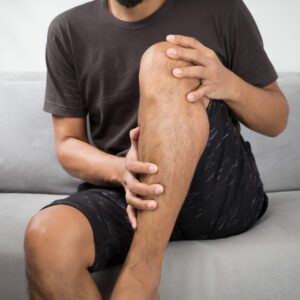
What Does A Bone Bruise Feel Like?
A bone bruise, while not as severe as a fracture, can be incredibly painful and disruptive to daily activities. Understanding what a bone bruise feels like, its causes, symptoms, and treatment options is crucial for anyone who has experienced this type of injury. In this comprehensive guide, our orthopedic in Hackensack NJ will explore all aspects of bone bruises from an orthopedist’s perspective.

Understanding Bone Bruises
A bone bruise is a type of injury that involves damage to the bone’s microstructure. Unlike a fracture, where there is a break in the bone, a bone bruise is an injury to the bone tissue that results in bleeding and swelling within the bone. This can occur due to direct impact, trauma, or repetitive stress on the bone.
Causes of Bone Bruises
Bone bruises can occur from various traumatic events such as:
- Sports injuries: High-impact sports like football, basketball, and soccer often lead to bone bruises due to collisions and falls.
- Accidents: Car accidents or falls from a height can cause significant impact injuries.
- Direct blows: Any direct hit to the body, such as a fall onto a hard surface, can result in a bone bruise.
Symptoms of Bone Bruises
The symptoms of a bone bruise can vary depending on the severity of the injury and the specific bone affected. Common symptoms include:
- Pain: A deep, throbbing pain that can be severe and persistent.
- Swelling: The affected area may swell and become tender to the touch.
- Stiffness: Reduced range of motion in the affected joint.
- Discoloration: Bruising on the skin over the injured area, appearing blue, purple, or yellow as it heals.
- Weakness: A feeling of weakness or instability in the affected limb.
Diagnosis of Bone Bruises
Diagnosing a bone bruise typically involves a thorough clinical examination and imaging studies. Magnetic Resonance Imaging (MRI) is the most effective tool for diagnosing bone bruises, as it can reveal the extent of the injury and the specific areas affected. X-rays are less effective as they primarily show fractures, not bruises.
Treatment Options for Bone Bruises
Treatment for bone bruises focuses on managing symptoms and promoting healing. Here are the primary treatment options:
Rest and Immobilization
Rest is essential to allow the bone to heal. Immobilization with a brace or splint may be necessary to prevent further injury and provide support.
Ice Therapy
Applying ice to the affected area can help reduce swelling and pain. Ice should be applied for 20 minutes every 2-3 hours during the initial days after the injury.
Elevation
Elevating the injured limb can help decrease swelling and promote fluid drainage away from the bruised area.
Pain Management
Over-the-counter pain relievers such as ibuprofen or acetaminophen can help manage pain and reduce inflammation. In some cases, prescription pain medication may be necessary.
Physical Therapy
Once the initial pain and swelling have subsided, physical therapy can help restore range of motion, strength, and function. Specific exercises will be tailored to the individual’s needs and the severity of the bruise.
Complications of Bone Bruises
While most bone bruises heal without significant complications, some issues can arise:
- Prolonged Pain: Pain may persist longer than expected, requiring additional medical intervention.
- Joint Stiffness: Persistent stiffness in the joint may necessitate more intensive physical therapy.
- Osteonecrosis: In rare cases, a severe bone bruise can lead to osteonecrosis, a condition where the bone tissue dies due to lack of blood flow.
Preventing Bone Bruises
Preventing bone bruises involves taking measures to protect yourself from trauma and impact injuries. Here are some tips from our orthopedic in Hackensack NJ:
- Wear Protective Gear: Use appropriate protective equipment during sports and high-risk activities.
- Exercise Caution: Be mindful of your surroundings to avoid falls and accidents.
- Strengthen Muscles: Engage in regular exercise to strengthen the muscles around your bones, providing better support and stability.
- Warm-Up and Stretch: Always warm up and stretch before physical activities to prepare your body and reduce the risk of injury.
When to See a Doctor
It is crucial to seek medical attention with an orthopedic in Hackensack NJ if you experience:
- Severe pain that does not improve with rest and over-the-counter pain medication.
- Significant swelling and bruising.
- Inability to move the affected limb.
- Symptoms of infection, such as fever, redness, or warmth around the injured area.
Visit our Orthopedic in Hackensack NJ
A bone bruise can be a painful and limiting injury, but with proper care and treatment, most people make a full recovery. Understanding the symptoms, causes, and treatment options is essential for managing this type of injury effectively. If you suspect you have a bone bruise, seeking prompt medical attention from an orthopedic in Hackensack NJ can ensure you receive the best care and guidance for your recovery.
